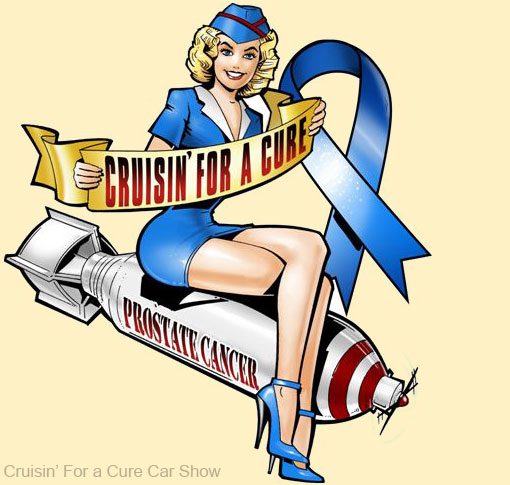 |
 |
 |
Publishing Corner: Indian Community: Science & Wonder Indian Heros: California Indian Art: CALIE Library: Academic Financial Aid: Tribal Governments: Indian Gaming: |

Military Veterans & Prostrate Cancer
Prostate cancer in the Vietnam veteran is a presumptive condition. Read more about presumptive conditions at www.vawatchdog.org. If you choose watchful waiting as your treatment, your 100% rating will continue uninterrupted. There is no end to the 100% rating until you have definitive treatment such as surgery or radiation.
Prostate cancer is an abnormal growth of cells in the prostate that form a lump (tumour). In time, without treatment, it may spread to other organs, particularly the bones and lymph nodes, which can be life threatening. Generally at the early and potentially curable stage, prostate cancer does not have obvious symptoms. This makes it different from other benign prostate disorders, which may result in urinary symptoms. What are the symptoms of prostate cancer? In the early stages of prostate cancer, there may be no symptoms at all. As prostate cancer develops, symptoms can include the need to urinate frequently, particularly at night, sudden urges to urinate, difficulty in starting urine flow, a slow, interrupted flow and dribbling afterwards, pain during urination or blood in the urine or semen. NOTE: It is important to note that these symptoms are not always signs of prostate cancer. They can also be What testing methods are available? There is currently no population based screening for prostate cancer and this leads to confusion amongst men and their doctors. There are issues related to testing and treatment which should be discussed prior to making a decision whether to be tested. For more information go to: www.prostate.org. Two simple tests can be done by a doctor:
A combination of both a DRE and PSA blood test is recommended. These tests should be considered as part of a general male health check annually from 50 years of age or 40 if there is a family history of prostate cancer. If either the DRE or PSA tests are abnormal, the doctor may conduct a second series of tests or refer to a Urologist, who may recommend a biopsy. The biopsy is a definitive way of diagnosing prostate cancer and will determine the stage (how far the cancer has spread) and grade (how rapidly it is likely to spread). This information is used to determine the risk the cancer poses to the man’s health and life expectancy. Once you have definitive treatment (surgery, radiation) your future rating will be modified to reflect that your cancer is gone. Without cancer, you will no longer be rated at 100%. Your rating will reflect the residual effects of treatment. Most veterans will have a 40% or 60% rating. Whether you have 40% or 60% will largely depend on how many pads or adult diapers you soil each day, how many nighttime awakenings occur for you to urinate and the degree of frequency and urgency you experience when you need to urinate. A "condition", in the language of the VA, is any disease, illness or injury that occurs during active duty military service. To be service connected and eligible for a disability compensation rating, the condition must be caused or contributed to by an event that occurred during service. If the condition existed prior to service, it must be shown to have been aggravated (made worse) by military service. To achieve a disability compensation rating, the veteran must prove that he or she had appropriate military service, that an event that caused the claimed condition occurred and that a medically diagnosed condition that is disabling exists today. The regulations that govern presumptive conditions only eliminate the requirement to prove that an event caused the condition. For example, a Vietnam veteran does not have to prove that agent orange caused the diabetes he has today. It is presumed that he was exposed to agent orange and also that agent orange is at the root of the diabetes. While Agent Orange and the Vietnam veteran are the best known of all presumptive conditions and ratings, atomic veterans, certain Korean veterans and other veterans may also be eligible for presumptive ratings of certain conditions. The regulations are complex. Some veterans who have a Vietnam Service Medal aren't eligible for presumptive ratings because they didn't set their boots on the soil of the country of Vietnam. Many Korean veterans don't realize that they may be eligible for service connections due to exposure to the herbicide agent orange. "Our country's veterans deserve the best possible health care, and this study clearly confirms that Agent Orange exposure during service in Vietnam is associated with a higher risk of prostate cancer later in life," said Ralph deVere White, UC Davis Cancer Center director and a study co-author. "Just as those with a family history of prostate cancer or who are of African-American heritage are screened more frequently, so too should men with Agent Orange exposure be given priority consideration for all the screening and diagnostic tools we have at our disposal in the hopes of early detection and treatment of this disease." Now a banned chemical, Agent Orange is a combination of two synthetic compounds known to be contaminated with the dioxin tetrachlorodibenzo-para-dioxin (TCDD) during the manufacturing process. Named for the color of the barrel in which it was stored, Agent Orange was one of many broad-leaf defoliants used in Vietnam to destroy dense forests in order to better visualize enemy activity. It is estimated that more than 20 million gallons of the chemicals, also known as "rainbow herbicides," were sprayed between 1962 and 1971, contaminating both ground cover and ground troops. Most of the rainbow herbicide used during this time was Agent Orange. In 1997, the International Agency for Research on Cancer reclassified TCDD as a group 1 carcinogen, a classification that includes arsenic, asbestos and gamma radiation. The study was funded by the UC Davis Cancer Center. In addition to Chamie and deVere White, study authors were (name edited), associate chief of staff, clinical informatics, VA Northern California Health Care System; Dennis Lee and Joon-ha Ok, UC Davis resident physicians with the Department of Urology; and Lars Ellison who, at the time the study was conducted, was an assistant professor with UC Davis and chief of urology with the VA Northern California Health Care System. Ellison is now affiliated with the Penobscot Bay Medical Center in Maine and a major in the U.S. Army Reserve currently serving active duty in Iraq. Prostate cancer is the second most common malignancy and the second leading cause of cancer death in American men. So, troops, watch your six. Sources: RETURN TO OUR: Native American Indian Military Veterans Community Blog
|
CALIF INDIAN EDU NETWORK: APAPAS.com
—
WEB SITE DESIGN
www.calie.org COPYRIGHT 2008-Present • ALL RIGHTS RESERVED
